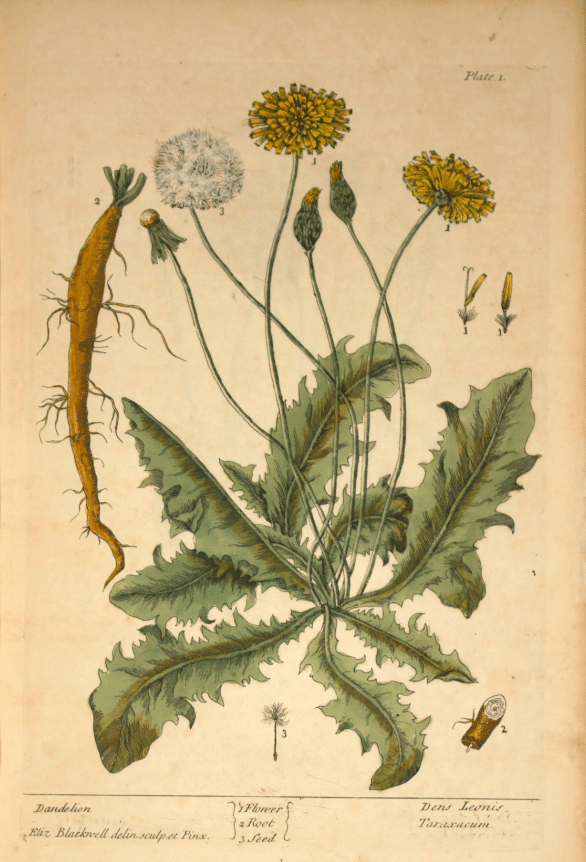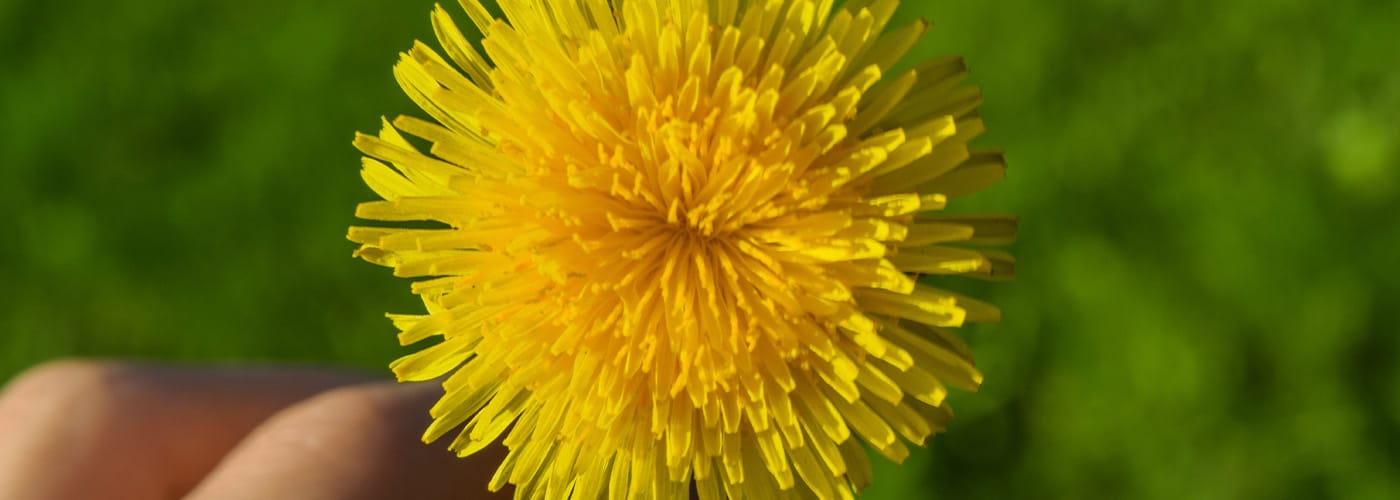Dandelion: Diamond in the Rough OR The Marvelous Dandelion
The use of plants for healing has existed as long as there have been humans. Archaeological evidence dating back thousands of years indicate that plants were exalted for both their medicinal and spiritual properties.
Non-humans also recognise the benefits of plants in maintaining health – an example is how chimpanzees chew on Ficus sur, or Cape fig as an antibacterial[i], along with other native plants that represent the animal’s pharmacopeia. The leaves of Ficus sur are also used in herbal medicine to cure swelling and improve kidney function[ii].
So, it shouldn’t be surprising that pretty much everything that grows is useful to us, and that many plants are especially critical in maintaining health and vitality. But unfortunately, many people lack the understanding, or ability to recognise the intricate connection between our environment and our health.
A good example of this is the superstar herb, Taraxacum officinale, better known as Dandelion. Yes, those same bright yellow flowery things that muck our driveways, litter our lawns, and are generally dismissed as weeds.
These resilient, nutritional, and medicinal powerhouse flowers rejected as garden nuisances have been recognised across multiple cultures for hundreds of years as valuable tonic herbs. Dandelions provide support to the digestive system, while safely reducing fluid retention, supporting detoxification, and acting as potent anti-inflammatories. And this is in addition to being a delightful addition to a salad or a wonderfully healing tea.


What is a Tonic Herb?
Tonic herbs are part of a categorisation system used by herbalists to classify the types of problems an herb can treat or an action an herb performs.
As tonic herbs are generally supportive to the body, they are high in a variety of phytochemicals (plant chemicals) such as flavonoids, terpenes, and polyphenols, which contribute to antioxidant, anti-inflammatory and health-promoting effects. Tonic herbs tend to balance stress responses, termed as having adaptogenic properties. They’re also high in vitamins and minerals which make them nutritive and a helpful addition to any diet. Tonic herbs support detoxification and elimination processes which maintain balance throughout the entire body. In essence, tonic herbs promote optimal health gently, and effectively.
Herbal tonics can be prepared as a single herb, or in herb combinations. The benefits of tonic herb combinations are to create synergy in the herbal blend, so that you can smoothly increase the different nutritive and healing elements.
A common dandelion tonic preparation consists of dandelion root, burdock root, sarsaparilla root, and ginger root (all tonic herbs). By combining these ingredients within a tea, we’re able to synergise and increase the properties of detoxification, improve digestion, reduce inflammation, and enhance nutrition.

Dandelion Healing Components
Often, most, if not the entire plant can be used for medicinal reasons. Fresh and living plants give their whole selves to alleviate illness and improve vitality in our whole being.
When it comes to the dandelion, there are three crucial elements that offer unique benefits to wellness, the root, leaf, and flower.
One of the most underappreciated parts of the dandelion plant is its root. Dandelion roots, harvested from mature plants, are edible, and known for their earthy flavour and high amounts of vitamins, minerals, and antioxidants. Dandelion roots drive whole body support because:
- The roots of dandelion contain inulin, a type of soluble fibre that acts as a prebiotic, promoting the growth of beneficial gut bacteria, combating gut dysbiosis.
- Dandelion roots are a good source of vitamins like A, C, and K, as well as minerals, potassium, and iron.
- Dandelion roots promote liver health, aid digestion, promote skin health and improve immune function.
Dandelion leaves, which are more commonly known, are also packed with vitamins and minerals. Dandelion leaves are a nutritious addition to salads, smoothies, and cooked dishes. Also, dandelion leaves are:
- Particularly rich in vitamins A and K, providing a boost to eye health, skin health, and bone density.
- High in calcium and magnesium, as well as iron, which are essential minerals for supporting bones and muscles.
- Lightly bitter – they produce the bitter action as an herbal remedy. Bitter herbs have a stimulating effect on the digestive system through the reflex of the tastebuds. This taste also provides a lovely flavour to many dishes.
And we can’t forget dandelion flowers!
- Dandelion flowers are strong antioxidants, with flavonoids and polyphenols, which neutralise free radicals in the body.
- The flowers have strong diuretic and detoxifying properties, supporting kidney function, and promoting the elimination of toxins.
- The flowers also soothe the skin, and can be added to skincare remedies like balms and creams for extra skin nourishment.
Dandelion has been explored for its potential in supporting weight loss due to its detoxification abilities. It has also been investigated for its potential in managing diabetes and preventing certain types of cancer.
While dandelion is not typically classified as an adaptogen (helps the body adapt to stress), many herbalists purport its mild adaptogenic effects through its vitamin and mineral composition. This is especially evident when dandelion is synergised with known adaptogens like chicory.

Incorporating Dandelion into Your Lifestyle
Dandelion can be found in a variety of forms – tinctures, dried teas, supplements and fresh flowers and leaves. And if you’re brave, you can forage for them yourself!
Dandelions are extremely prolific, with the odd flower found all year round. They prefer sunlit areas, which makes their optimal flowering season from late March to October when soil temperatures rise in the Northern and Western hemispheres.
Some believe the leaves are at their tastiest when young and picked before the plant comes to flower. Afterwards, the leaves get a little more bitter.
But whether you choose to buy or forage for dandelion to add to your salad, or brew in a cup of dandelion tea, incorporating this humble plant into your lifestyle can offer a myriad of health benefits. Dandelion is a safe, gentle herb that is a must have for your wellness boosting regime!
There are a great many overlooked herbs awaiting our consumption and respect! Learn more by studying a Naturopathic Diploma in Herbal Medicine at CNM!
Written by Charlee Martin
[i] Ahoua, Angora Rémi Constant, et al. “Antimicrobial Potential of 27 Plants Consumed by Chimpanzees (Pan Troglodytes Verus Blumenbach) in Ivory Coast.” BMC Complementary and Alternative Medicine, vol. 15, no. 1, 23 Oct. 2015, https://doi.org/10.1186/s12906-015-0918-7. Accessed 25 May 2021.
[ii] Sieniawska, Elwira, et al. “Phytochemical Insights into Ficus Sur Extracts and Their Biological Activity.” Molecules (Basel, Switzerland), vol. 27, no. 6, 13 Mar. 2022, p. 1863, pubmed.ncbi.nlm.nih.gov/35335228/, https://doi.org/10.3390/molecules27061863. Accessed 3 June 2022.

